#ezero
Text
EZERO, NOMBRE ABORIGEN DE LA ISLA DEL HIERRO
Ezero, el nombre amazigh de la isla de El Hierro
Imagen: CAUCE Gobierno de Canarias
IẒUṚAN. La isla de El Hierro es la más meridional y occidental de Canarias. Además es la que cuenta con una menor superficie terrestre (269 km²) de las siete islas mayores siendo una de las más jóvenes geológicamente hablando. La isla, hoy Reserva de la Biosfera, estuvo habitada antaño por una población amazigh denominada bimbaches o bimbapes, por lo que podemos considerar a este territorio como punto más occidental del viejo mundo amazigh.
La huella de esta población en la isla es palpable, no sólo por los restos arqueológicos o la notable densidad de inscripciones líbico-bereberes (más de 100), sino por los elementos culturales vivos heredados por la población herreña actual; abundante toponimia y léxico amazigh, así como en aspectos de las costumbres ganaderas, gastronomía, artesanía, deportes y posiblemente folklóricos.
Pero ¿Cómo llamaron los bimbaches a su isla?
Autores del siglo XVI y XVII dan variantes de la que parece ser una única denominación; Esero, Ezero, Écerro, Hero o Eccero. Es Abreu Galindo el que más detalles nos aporta incluyendo la traducción de ‘fuerte’, el en sentido de fortaleza natural;
Abreu Galindo, J. (1590 ed.1848:46)
Poblado de Guinea en la isla de Ezero. Foto: MAURITIUS IMAGES GMBH.
Otros ejemplos en el país
Para explicar este significado, Abreu lo relaciona con el topónimo palmero Acero, que correspondió a la zona central de la isla de La Palma hoy denominada Caldera de Taburiente, otorgándoles idéntico significado:
"(…) Acero, que al presente llaman la Caldera, que en lenguaje palmero quiere decir 'lugar fuerte', que parece significar lo mismo que en lenguaje herreño Ecerro". “(El nombre) está bien adaptado al lugar, porque es casi inexpugnable; y así fué lo último que se ganó de la isla (Abreu Galindo, 1590 ed. 1977:268). "Este término de Acero se llama al presente Caldera, porque su hechura es en forma de caldera, toda a la redonda cerrada de muy altos riscos y laderas, que bajan en forma de cerros a lo bajo de ella" (ibíd.: 284).
Los abruptos riscos de la Caldera de Taburiente vistos desde el interior. Foto: paisajesdeordesa.com
Aunque podría considerarse que el topónimo no llegó hasta nuestros días por transmisión oral, quizás en otros rincones del archipiélago sí fue posible. Así lo creen algunos autores que advierten del topónimo Acero o Asero en varias ubicaciones de Tenerife (Barranco de Acero entre Icod y Garachico, Lomo de Acero en Arico, y Barranco de Acero en Santa Úrsula añadimos nosotros), de La Palma (Cuevas de Acero, en Barlovento) y Gran Canaria (Cuesta de Acero, en Moya). Trapero lo explica de la siguiente manera: "Nos parece imposible que este término toponímico canario se corresponda con la voz española acero (...) Más bien creemos que debajo de esa escritura subyace la forma /aséro/". No obstante, debemos ser prudentes pues el apellido Acero existe y puede ser el motivo de estos topónimos actuales o de alguno de ellos.
Por nuestra parte, consideramos que el plural de Ezero o Acero lo encontramos en los topónimos Isora; un malpaís en el suroeste de Tenerife (en el actual Municipio de Guía de Isora), una zona en Tegueste y una localidad en la propia isla de El Hierro.
¿Qué nos dice la tamazight actual?
Topónimos como este, documentados y tan bien explicado por un cronista, desafortunadamente no son los más habituales en Canarias. Además, la lingüística comparada con las variedades de la tamazight actual del continente arrojan bastante luz al respecto dando la razón a Abreu tanto en la relación entre el Ezero herreño y el Acero palmero como en el significado del mismo.
Ya Wölfel, en su tiempo y con sus enormes limitaciones, lo relacionó con la voz panamazigh aẓṛu ‘roca’ y el tuareg aẓeru ‘muralla rocosa en pico’. En similar dirección apuntaron posteriormente Ahmed Sabir (2001) y Reyes García (2003). Sabir explica que el significado de aẓeru (plu. iẓeran) es idéntico puesto que “por derivación semántica la voz aẓeru ha venido a significar en tachelhit ‘lugar fuerte’, por alusión a la materia con que está edificada; por ello la voz aẓeru se convierte en sinónima de agadir e igherm”. Por otro lado, Reyes considera que es más preciso relacionarla conla voz tuareg aẓeru ‘muralla rocosa alta y vertical’.
Como complemento, también debemos añadir que la voz aẓṛu es habitual en la toponimia amazigh de países vecinos como Marruecos, Argelia, Túnez o Libia haciendo referencia a montañas o roques, algunos vinculados con las creencias preislámicas.
Panorámica de la ciudad marroquí Azrou [Aẓṛu en amazigh] a 1250 mts en la Cordillera del Atlas. Su nombre se debe al enorme roque que rodea la urbe.
Conclusiones
Como describen las fuentes documentales y confirma la lengua amazigh, el nombre ancestral de la isla de El Hierro fue Aẓeṛu (voz castellanizada por los cronistas como Esero, Ezero, Écerro, Eccero o Hero). Este término amazigh abarca un campo semántico concerniente a ‘piedra, roca, roque’ pero que, en este caso, debe traducirse como ‘lugar fuerte’, es decir, un lugar especialmente abrupto y rocoso que conforma una fortaleza natural.
REFERENCIAS
-Abreu Galindo, J. Historia de la Conquista de las siete islas de Gran Canaria.
- Akli Haddadou. Dictionnaire des racines berbères communes.
- Álvarez Delgado, J. Etimología de Hierro (Eres o Heres). Revista de Historia de la Universidad de La Laguna.
-Reyes García, I. Diccionario Ínsuloamaziq. On line.
-Sabir, A. Las Canarias prehispánicas y el Norte de África. El ejemplo de Marruecos.
-Trapero, M. Toponimia ULPGC.
Publicado por IZURAN en 23:23 Enviar esto por correo electrónicoBlogThis!Compartir en TwitterCompartir en FacebookCompartir en Pinterest
Etiquetas: El Hierro-Aẓeṛu, Lengua~awal
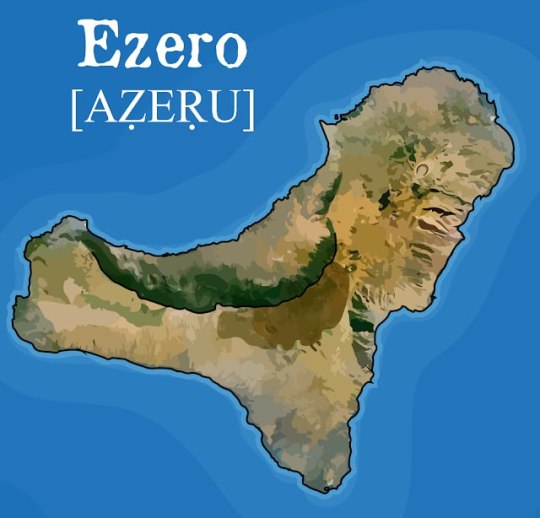

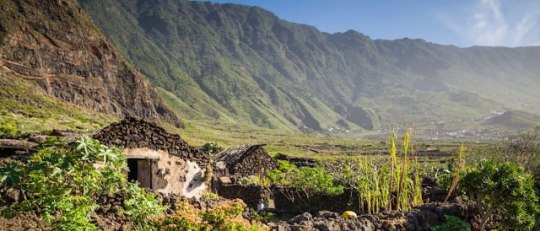


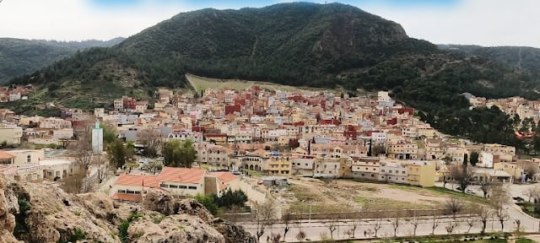
Iẓuṛan Canarias
🔥La isla de El Hierro es la más meridional y occidental de Canarias. Además es la que cuenta con una menor superficie terrestre (269 km²) de las siete islas mayores siendo una de las más jóvenes geológicamente hablando. La isla, hoy Reserva de la Biosfera, estuvo habitada antaño por una población amazigh denominada bimbaches o bimbapes, por lo que podemos considerar a este territorio como punto más occidental del viejo mundo amazig.
https://izuran.blogspot.com/2023/06/el-nombre-amazig-de-la-isla-de-el-hierro.html?fbclid=IwAR34QAlnYVWaHArKgMLsEd7FcP7kYIMGAn7BQKnSp1WQbiNv16GudCxrZuA
https://www.facebook.com/izuran.canarias/posts/pfbid01QsFcv3AcdiFzvS8mQLtCx4NwX58DNecBmi584SPFyVrspnMT4C1C9eyJV3g9z5il?__cft__[0]=AZVSdKwtabcmhDN3OJbkuu4m5BmiVTL1DyJ1vIs-IEt55bBVqCKue_MFmLl6mSHXPps7P4hK3XKqxH8uoNH3aO1RS2gVLMbbDspd3w_sGS_BcS35B5aQnFjVhsz3FyhDroi8e2b5rYqm9ewqHrlRMhvY5qY6wQUFUvGjmgVM80Gyag&__tn__=%2CO%2CP-R
#izuran#ezero#el hierro#aborigenous#indigenous#culture#history#genocide#native#unesco#united nations#canary islands#international criminal court#cou penal international#corte penal internacional#islas canarias#naciones unidas#nativos#genocido#historia#cultura#indigenas#aborigenes#canarias tiene identidad cultural propia#canarias la colonia mas antigua del mundo#descolonizacion de canarias#canarias#onu#icc#amazigh
6 notes
·
View notes
Text

Moon above Ohrid Lake. / Месечината над Охридско Езеро/
15 notes
·
View notes
Text

Liqeni i Ohrit/Ohridsko Ezero, Albania/North Macedonia
#me trying to clean my act by painting landscapes so that tumblr unflags me-tober#digital painting#landscape#lake#roba mia#also if the translation is incorrent blame my albanian friend thnx
22 notes
·
View notes
Text
the guy was like fucking floating and shit i diddnt even know any of the songs except ezero dugne, kambaris ezero dugne, masina kambarija ezero dugne
3 notes
·
View notes
Text
dabar yra 2001-ieji metai. birzelio penktadienis.
tik ka baigesi darbas ir skrendi su e36 i Maxima
nusiperki tris lekstes utenos melyno, saslyku, semkiu
figaro grandinele, geltonu stiklu akiniai nuo saules, zele statyti plaukai, dazytom saknim. placios kelnes, pidarastke, maike su liepsnom.
guldai spidaka link Traku arba Ignalinos
groja Virus, Ruki V Verh ir Zas
susitinki su draugeliais prie ezero ir isvaziuoji tik sekmadienio ryta.
2 notes
·
View notes
Note
I am curious (and spam asking mutuals):
Is there a word in English for a man-made hole+water body, made for the sole purporse of keeping fishes? Does your language have one? Are people correcting people like in my childhood "that's not a lake that's pond-previously-made-for-fishing"?
fish pond ?
here it's рибарник (ribarnik) but i dont see it used very often. i don't think we have many of them either
for small backyard ponds i've seen декоративно езеро (dekorativno ezero) used, literally decorative lake or езерце (ezerce), little lake
5 notes
·
View notes
Photo
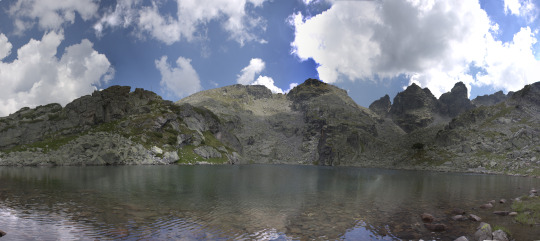
Panorama from the shore of "Strashno ezero" (Scary lake in Rila, Bulgaria) [OC] [5400x2407]
2 notes
·
View notes
Photo

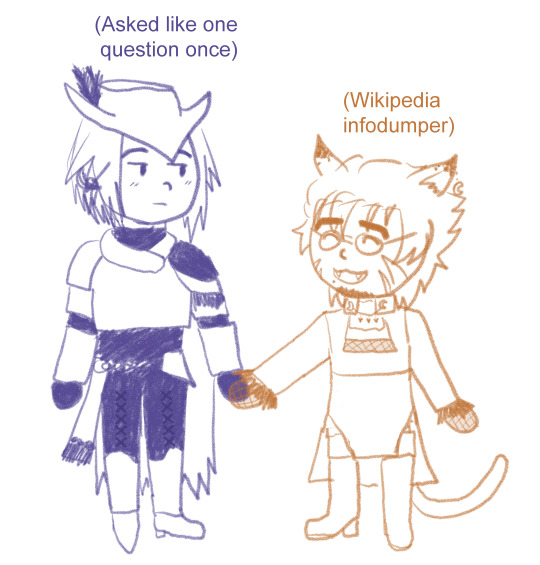

Too tired to do finished art but the ideas keep going
4 notes
·
View notes
Link
Ūdens temperatūra Latvijas upēs, ezeros un jūras piekrastē ceturtdienas rītā ir robežās no +12 līdz +18 grādiem, liecina Latvijas Vides, ģeoloģijas un meteoroloģijas centra dati. Lielākajos ezeros ūdens nav kļuvis vēsāks par +17..+18 grādiem. Ūdens temperatūra vairumā upju pazeminājusies līdz +13..+16 grādiem, siltāks ūdens saglabājas dažās lielākajās upēs. Ventā ūdens temperatūra svārstās ap +16 grādiem, Lielupē un Daugavā tā ir +17..+18 grādi, Pļaviņu ūdenskrātuvē - nepilni +19 grādi. Jūras piekrastē ūdens temperatūra agrā ceturtdienas rītā bija no +12,2 grādiem Mērsraga ostā un +13,2 grādiem Rojas ostā līdz +17,4 grādiem Daugavgrīvā pie Rietumu mola un +17,6 grādiem Skultes ostā. Jau ziņots, ka ceturtdien un piektdien Latvijā pārsvarā gaidāms saulains un vasarīgi silts laiks, sestdien līs un kļūs vēsāks, bet nākamās nedēļas gaitā temperatūra no jauna paaugstināsies un bieži spīdēs saule, prognozē sinoptiķi.
0 notes
Text
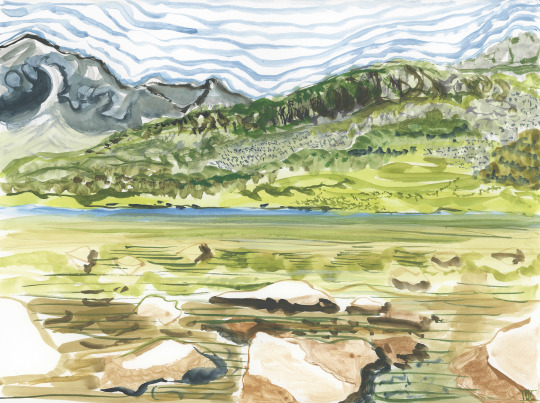
"DOLNO MUSALENSKO EZERO" | 36x48cm | Watercolor, gouache
#idg_forma_official#romanianartist#romanianfemaleartist#rilanationalpark#rilamountains#glacierlake#watercolor#waterverf#waterverfschilderij#aquarell#aquarelle#acuarela#aguarela#hotpressedpaper#dolnomusalenskoezero#landscape#mountains#gouache
0 notes
Text
CARNAVALES AMAZIGH
EDRA - Origen
EL ARANFAYBO Y LAS CARETAS DE COCHINO DE SABINOSA
El Aranfaybo era un animal sagrado para los bimbapes, con apariencia de cochino, era invocado como intermediario mágico para atraer la lluvia. Residía en la cueva Asteheyta, en el término de Tacuytunta, en Ezero (El Hierro).
Aranfaybo. De *aram-əffay-əbuz (aramfayboz) ‘el que provoca la lluvia’ [Ignacio Reyes, 2011]
«[…] y si con esta diligencia no llovía, uno delos naturales aquien ellos tenían por santo, íba al termino, y lugar que llamaban Tacuytunta, donde está una cueba, que decían Asteheyta, y metiendose dentro, éynvocando los ydolos, salía de dentro un anímal en forma de Cochino, que llamaban Aranfaybo, que quíere decír Medíanero, porque como aquellos gentiles vían quepor sus ruegos no alcanzaban lo que pedían, buscaban medíanero para ello; y a este Aranfaybo, que era el demonio tenían ellos en lugar de santo» [Abreu Galindo (ca. 1590, I, 18)]
Sabinosa es una localidad situada en el noroeste de la Isla de El Hierro perteneciente al municipio de La Frontera que ha mantenido vivas tradiciones e historias antiguas como “Las Caretas de Cochino”.
En las tardes de carnaval y ataviados con una horrorosa máscara de cochino con una espantosa trompa y enormes orejas se producía una manifestación asombrosa por las pequeñas calles de la localidad. Esta es una valiosa manifestación inédita y singular de la que no se tiene referencias en otros lugares de Canarias y se mantenía presente hasta los años cuarenta.
“De carneros en Sabinosa no recuerdo nada, eso era los de Tigaday que eran los famosos, Juan Pérez sí que salía en Carnavales pero con una careta de cochino feota, que nos daba miedo, era vecino mío, era mayor y ya murió. Llevaba como unos abrigos, disfrazado con vestidos oscuros imitando a un cochino que aquí eran negros, pero no era con pieles, antes aquí los cochinos eran de los negros. Salía por los caminos y nos escondíamos por el miedo, como hacen ahora con Los Carneros".
[Vicente Hernández Quintero, Sabinosa (El Hierro) entrevista pers. (2011) Gaceta del Meridiano]
"Sí, recuerdo que iba con una máscara que llevaba una trompa enorme, un jocico grande y las orejas, corriendo de casa en casa por carnavales, si, era Clodualdo; (…) la preparaba con sal, la salaba y la curtía pa cuando llegara la fiesta, corría tras los chiquillos y gruñía, gro, gro, como los cochinos, que yo recuerde él salía solo (…) la matanza de cochinos empezaba en octubre y con la cabeza del cochino empezaba a preparar esa máscara”
[Pascual García Gutiérrez, Sabinosa (El Hierro) entrevista pers. (2011) Gaceta del Meridiano]
“Eso era en Sabinosa, primero los carneros y el cochino lo mismo, iba detrás corriendo y nosotros a escondernos porque teníamos miedo, pero no pintaban a nadie sino corriendo tras la gente. El que salía creo se llamaba Felipe León, creo que era él, con una careta de cochino y las orejas y hacía gruñidos como un cochino, con unas ropas viejas, me parece que como un cochino negro con las orejas y la trompa grande".
[Eloína Pérez Hernández, Sabinosa (El Hierro) entrevista pers. (2011) Gaceta del Meridiano]
FUENTES
www.imeslan.com
Ricardo Marcos Fajardo Hernández - Gaceta del Meridiano: Las Caretas de Cochino de Sabinosa
http://www.gacetadelmeridiano.com/.../6162-las-caretas-de...
📷 1. Fotograma del cortometraje de Armando Ravelo “La Tribu de las 7 Islas” (2017).
📷 2. Ilustración de Juan Fajardo. Gaceta del Meridiano.
📷 3. Tarek Ode. Cabeza de figura de cochino. El Museo Canario. Gran Canaria.
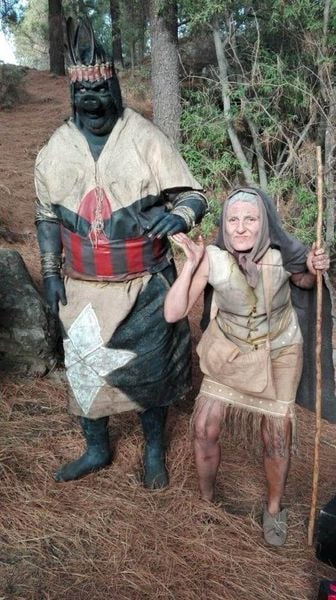


http://www.gacetadelmeridiano.com/.../6162-las-caretas-de
#aranfaybo#bimbape#bimbache#ezero#el hierro#carnavales#tacuytunta#aborigenous#indigenous#culture#history#genocide#native#unesco#united nations#international criminal court#court penal international#corte penal internacional#aborigines#indigenas#cultura#historia#genocidio#nativos#naciones unidas#canarias tiene identidad cultural propia#canarias la colonia mas antigua del mundo#descolonizacion de canarias#canarias#islas canarias
0 notes
Photo

#kavadarci #tikvesh #macedonia #northmacedonia #tikves #laketikves @restoran_lule #friedcatfish #catfish #chips #cheese #pepper #yum #whereintheworldislianna (at Restoran Lule Tikvesko. Ezero) https://www.instagram.com/p/CkVX91vDiRe/?igshid=NGJjMDIxMWI=
#kavadarci#tikvesh#macedonia#northmacedonia#tikves#laketikves#friedcatfish#catfish#chips#cheese#pepper#yum#whereintheworldislianna
0 notes
Text
30/04/2023 part5

#photography#reminder#備忘録#Република Северна Македонија#Republika e Maqedonisë së Veriut#Ohrid#Охрид#Охридско Езеро#Ohridsko Ezero#Liqeni i Ohrit#🇲🇰
24 notes
·
View notes
Text
🟦 FASE 2: Generación de Píxel Art: Referencias
The Legend Zelda: Majora's Mask
Amanecer del primer día. Quedan 72 horas.
The Legend of Zelda: Majora's Mask se trata de una Link es un niño tras regresar en el tiempo (lo que sucede al terminar The Legened of Zelda: Ocarina of Time) y es asaltado por Skull Kid. Pierde la ocarina y a su yegua, y luego es convertido en un monstruo. Para regresar a su estado normal debe recuperar la máscara de Majora antes de tres días, pues la Luna puede colapsar contra su Tierra.

Lo que tenía que hacer Link para volver en el tiempo era tocar Song of Time en su ocarina. Tras completar este proceso, Link era transportado a través de una espiral a 72 horas antes del impacto de la luna contra la ciudad.
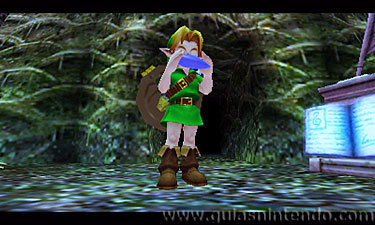
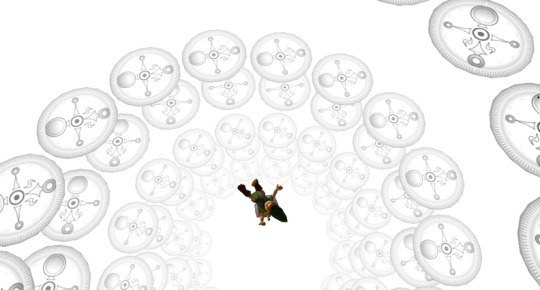
Lo que puedo rescatar de esta entrega vendría siendo la Ocarina, ya que vendría a ser el medio por el cual se logra el bucle. Y la espiral por el que pasa Link.
Minit
En Minit, el personaje principal solo cuenta con 60 segundos de vida. Lo que hace que muera en repetidas ocasiones y que el jugador tenga que investigar la zona para evitar dicha muerte.
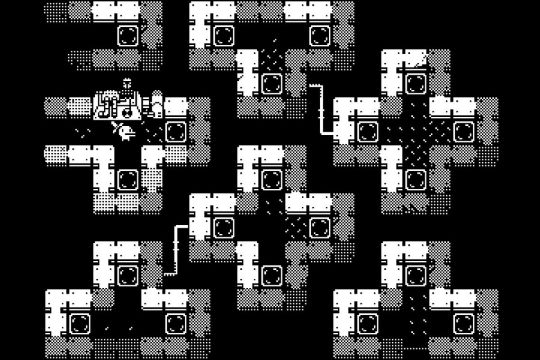


The Legend Of Zelda: Minish Cap
El hechizo de Vaati ha convertido en estatua de piedra a la princesa Zelda. Entonces Link parte de viaje en busca de los Minish para descubrir cómo romper el hechizo. En su camino se encuentra con Ezero , un extraño animal con forma de gorro. El cual será su compañero de aventuras durante esta saga.
Lo que me gustaría rescatar de este juego vendría siendo el estilo que tiene, ya que como trabaja con pixeles y es un poco más detallado de lo normal, iría perfectamente para mi concepto.
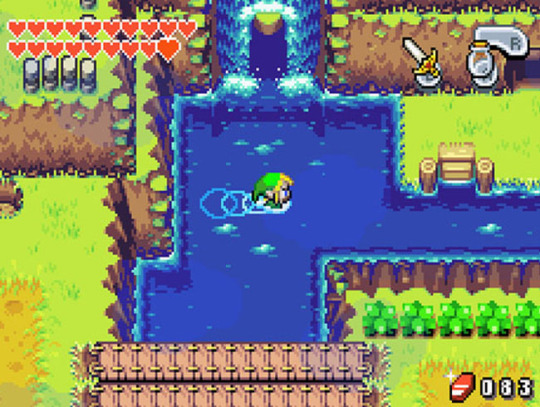
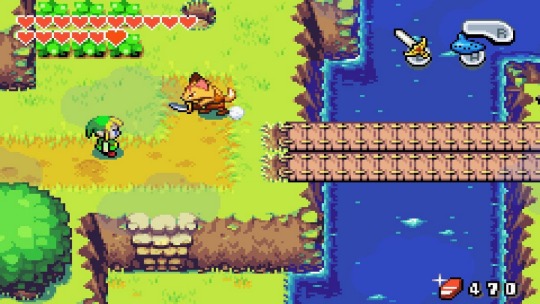
Gamers
Agarraré como elemento principal a un gamer, ya que en mi concepto se hace una comparación muy cercana con el soñador en "Las Ruinas Circulares".



A demás quisiera agregar en la composición final una Nintendo GameCube, ya que la primera versión de The Legend of Zelda: Majora's Mask salió para este tipo de consolas.
Bucles
Los bucles vienen siendo un elemento muy importante en el concepto. Después de investigar algunos símbolos para representar esto optaré por el circulo y/o uno de los símbolos de infinito.
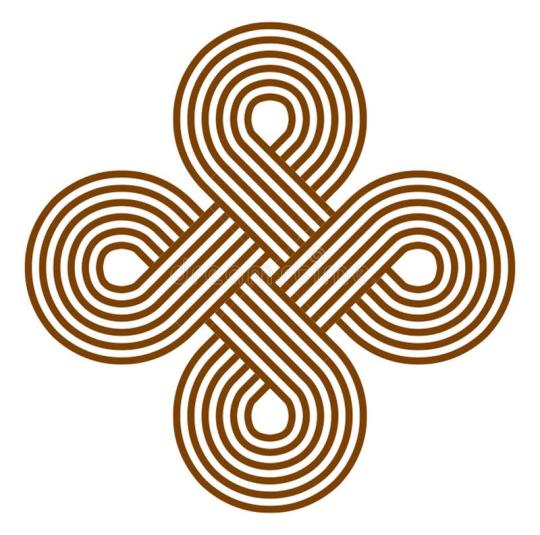

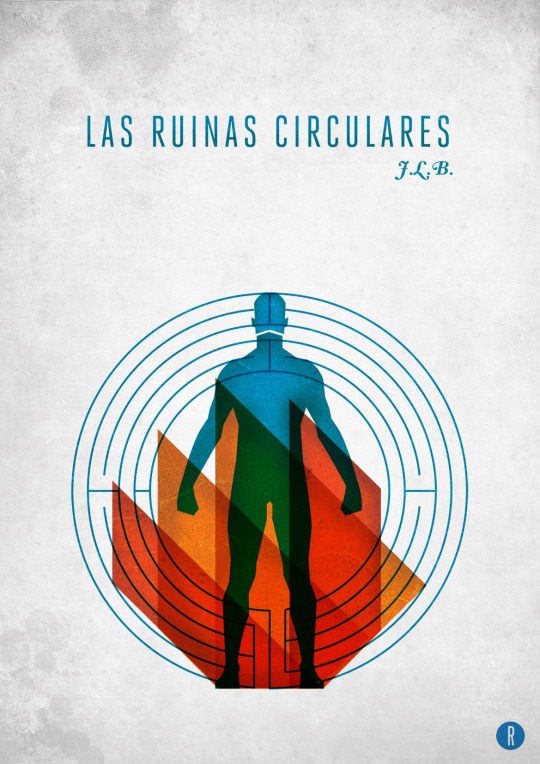


Espejo:
Siento que un espejo sería una buena manera de representar una similitud entre el soñador y el jugador.

1 note
·
View note
Photo

Karanovo statuettes of humans and animals
In the fifth and uppermost cultural stratum at Karanovo statuettes of humans and animals disappear, and so does the pottery, so varied in form and ornamentation. A change is felt even in the plan of the house — the narrow back side rounds out and forms an apse. An original pottery now appears, much simplified with scant ornamentation, consisting mostly of incised lines. The unusually elongated lugs ending in a knob are characteristic of this pottery. The change in the life of those who inhabited the fifth settlement at Karanovo is striking. Its causes are not yet clear. Certain scholars consider that it was due to the incursions of new tribes, who were already acquainted with bronze. Some link these new tribes with the Thracians.
The same materials found in the fifth cultural stratum of the Karanovo tell were also found in the so-called Dipsiska Mogila settlement mound at the village of Ezero, near Nova Zagora. The houses are the same as in Karanovo; rectangular with two rooms, and a semicircular wall at the short back side. In the western smaller room, around the hearth and the hand mill, a number of domestic objects were found. Similar ones were also found around the houses.
Copper spearheads
One is, however, impressed by the still-existing predominance of implements made of stone, bone and horn, and by the weapons — stone battle-axes. However, the first metal weapons — copper spearheads — appear together with them. There is no doubt whatever that this is the earliest period of the Bronze age, which is recently thought to begin the second half of the third millenium B. C., when bronze was still an alloy most difficult to obtain and only slightly distributed. Nevertheless, the rare and expens- i ve bronze implements exercized an influence upon the stone implements with their more expedient forms tours bulgaria. The stone battle-axe found at the village of Lyulin, Yambol district, shows undoubted imitation of a bronze original.
The settlement of pile-dwellings, found at the bottom of the Varna Lake, near the village of Strashimirovo also belongs to the early Bronze Age. Certain extremely interesting articles and pottery were found there.
The bronze implements and weapons so far found in Bulgaria belong to the late period of this age. Of particular interest are the double axes of the type of those found at the village of Semerdjievo, Rousse district. A bronze sword and a bronze spearhead appear here for the first time. Swords of the so-called Mycenaean type, of the second half of the second millenium have been found in Bulgaria, which plainly indicate therelationsof these lands with the Mycenean culture.
Whole treasure-troves of sickles, small bronze axes, as well as the stone moulds in which they were cast, are often found. As to the precise dating of these objects, however, we have no positive data as yet. Perhaps some of them will have to be attributed to the transition from the Bronze to the Iron age. The pottery of this period is also most interesting, particularly that found in North-West Bulgaria. This pottery is distinguished by a new colour scheme in the ornament, consisting of a combination of linear motifs, incised and covered with white matter. This pottery is wi ’ely distributed in the North-Western part of the Balkan Peninsula.
Metal implements now increasingly made their way into production, intensifying and increasing surplus production. This now led to an exchange of the commodities produced between the individual clans, and also to more frequent clashes between clans and tribes to appropriate the accumulated surpluses. This was followed by a develop-ment in weapons, particularly daggers and later swords, which were unknown in the preceding age.
0 notes
Photo

Karanovo statuettes of humans and animals
In the fifth and uppermost cultural stratum at Karanovo statuettes of humans and animals disappear, and so does the pottery, so varied in form and ornamentation. A change is felt even in the plan of the house — the narrow back side rounds out and forms an apse. An original pottery now appears, much simplified with scant ornamentation, consisting mostly of incised lines. The unusually elongated lugs ending in a knob are characteristic of this pottery. The change in the life of those who inhabited the fifth settlement at Karanovo is striking. Its causes are not yet clear. Certain scholars consider that it was due to the incursions of new tribes, who were already acquainted with bronze. Some link these new tribes with the Thracians.
The same materials found in the fifth cultural stratum of the Karanovo tell were also found in the so-called Dipsiska Mogila settlement mound at the village of Ezero, near Nova Zagora. The houses are the same as in Karanovo; rectangular with two rooms, and a semicircular wall at the short back side. In the western smaller room, around the hearth and the hand mill, a number of domestic objects were found. Similar ones were also found around the houses.
Copper spearheads
One is, however, impressed by the still-existing predominance of implements made of stone, bone and horn, and by the weapons — stone battle-axes. However, the first metal weapons — copper spearheads — appear together with them. There is no doubt whatever that this is the earliest period of the Bronze age, which is recently thought to begin the second half of the third millenium B. C., when bronze was still an alloy most difficult to obtain and only slightly distributed. Nevertheless, the rare and expens- i ve bronze implements exercized an influence upon the stone implements with their more expedient forms tours bulgaria. The stone battle-axe found at the village of Lyulin, Yambol district, shows undoubted imitation of a bronze original.
The settlement of pile-dwellings, found at the bottom of the Varna Lake, near the village of Strashimirovo also belongs to the early Bronze Age. Certain extremely interesting articles and pottery were found there.
The bronze implements and weapons so far found in Bulgaria belong to the late period of this age. Of particular interest are the double axes of the type of those found at the village of Semerdjievo, Rousse district. A bronze sword and a bronze spearhead appear here for the first time. Swords of the so-called Mycenaean type, of the second half of the second millenium have been found in Bulgaria, which plainly indicate therelationsof these lands with the Mycenean culture.
Whole treasure-troves of sickles, small bronze axes, as well as the stone moulds in which they were cast, are often found. As to the precise dating of these objects, however, we have no positive data as yet. Perhaps some of them will have to be attributed to the transition from the Bronze to the Iron age. The pottery of this period is also most interesting, particularly that found in North-West Bulgaria. This pottery is distinguished by a new colour scheme in the ornament, consisting of a combination of linear motifs, incised and covered with white matter. This pottery is wi ’ely distributed in the North-Western part of the Balkan Peninsula.
Metal implements now increasingly made their way into production, intensifying and increasing surplus production. This now led to an exchange of the commodities produced between the individual clans, and also to more frequent clashes between clans and tribes to appropriate the accumulated surpluses. This was followed by a develop-ment in weapons, particularly daggers and later swords, which were unknown in the preceding age.
0 notes